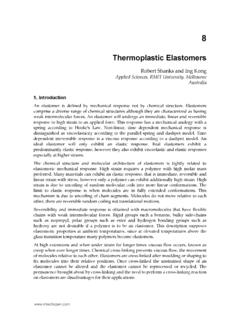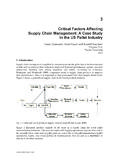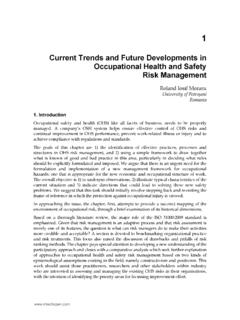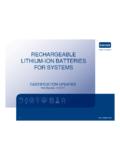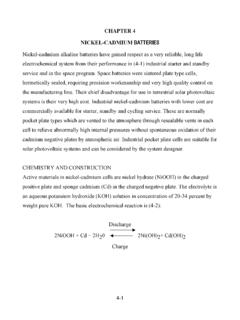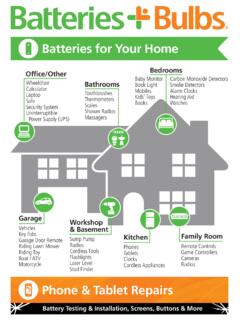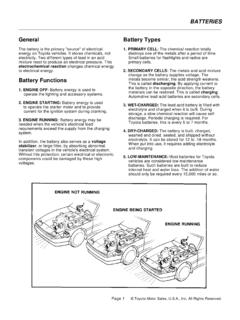Transcription of Batteries Charging Systems for Electric and Plug-In Hybrid ...
1 Chapter 5 2012 Monteiro et al., licensee InTech. This is an open access chapter distributed under the terms of the Creative Commons Attribution License ( ), which permits unrestricted use, distribution, and reproduction in any medium, provided the original work is properly cited. Batteries Charging Systems for Electric and Plug-In Hybrid Electric Vehicles V tor Monteiro, Henrique Gon alves, Jo o C. Ferreira and Jo o L. Afonso Additional information is available at the end of the chapter 1. Introduction Nowadays, energy efficiency is a top priority, boosted by a major concern with climatic changes and by the soaring oil prices in countries that have a large dependency on imported fossil fuels.
2 A great part of the oil consumption is currently allocated to the transportation sector and a large portion of that is used by road vehicles. According to the international energy outlook report, the transportation sector is going to increase its share in world's total oil consumption by up to 55% by 2030 [1]. Aiming an improvement of energy efficiency, a revolution in the transportation sector is being done. The bet is in the Electric mobility, mostly supported by the technological developments in different areas, as power electronics, mechanics, and information Systems .
3 Different types of Electric Vehicles (EVs) are being developed nowadays as alternative to the Internal Combustion Engines (ICE) vehicles [2][3], namely, Battery Electric Vehicles (BEV), Plug-In Hybrid Electric Vehicles (PHEV), in its different configurations [3], and Fuel-Cell Electric Vehicles (FCEV). This chapter presents Batteries Charging Systems for Electric and Plug-In Hybrid Electric Vehicles. To simplify the reading and to contribute to a simple understanding, from now on, in this chapter, it will be used the terminology of Electric Vehicle (EV) to define these two types of vehicles.
4 EVs are increasingly popular, as demonstrated by the numerous vehicles recently made available in the market by almost all automakers. The main energy storage Systems of these vehicles are the electrochemical Batteries , the ultracapacitors and the full-cells. However, taking into account nowadays limits of energy storage of those technologies, the vehicles have limited range autonomy. Different energy storage Systems configurations can be implemented [3][4][5], however, the electrochemical Batteries still are the most used technology to store energy.
5 Nevertheless, they are usually used in conjunction with New Advances in Vehicular Technology and Automotive Engineering 150 ultracapacitors to store energy during transient moments, as during the vehicle regenerative braking. Actually, the ultracapacitors are used in this way to receive a significant amount of energy in a short time, and to provide this energy to the next acceleration, or to help Charging the Batteries . The electrical power grids were not designed for this new type of load, which corresponds to the Batteries Charging Systems of EVs, therefore the impact caused by the proliferation of EVs cannot be neglected [6].
6 The challenge is to rebuild the electrical power grids, as early as possible, as smarter as possible, and the most environmentally friendly as possible. To achieve these targets arise the Smart Grids, which are not characterized as a single technology or device, but rather as a vision of a distributed electrical system , supported by reference technologies, as integrated communications, Power Electronics devices, Energy Storage Systems (ESS), and Advanced Metering Infrastructures (AMI). The Smart Grids intend to reduce the energy costs, and simultaneously to achieve a sustainable balance between production and consumption, increasing the reliability of the power grids and the power quality of the electrical energy delivered to the loads.
7 As aforementioned, EVs represent a new type of load that introduces new problems, but that also brings new possibilities of actuation. The problems arise from the possibility of occurring simultaneous Charging of a large number of vehicles, which can overload the power grid, and from the effects of non-sinusoidal current consumption of the Batteries Charging Systems . Among the opportunities, stands the fact that these vehicles have enormous potential to regulate the consumption profile from the power grid, by smoothing the natural intermittency of the renewable energy sources, and ensuring the power grid stability in terms of voltage and frequency, if they allow collaboration with the electrical power grid to store and deliver energy of the Batteries in parked vehicles.
8 One factor which suggests that such benefits may exist relates to the fact that private vehicles are parked on average 93-96% of their lifetime, during which time each vehicle represents an idle asset [7]. So, the energy stored in EVs Batteries may be suitable for providing regulation services, spinning reserves and peak power demand. This interactivity between the vehicles and the power grid is expected to be one of the key technologies in the future of the Smart Grids and Batteries Charging Systems , and is called Vehicle-to-Grid (V2G). The new paradigms of Smart Grids and V2G bring a profound change to the present Systems .
9 In [8] is presented one approach to the future of the power grids focusing the impact of PHEVs in Smart Grids, and in [9] is presented a concrete case of a technology to integrate EVs with Smart Grids. To solve the aforementioned problems different approaches can be taken into account, among them can be implemented a coordinated Charging of the EVs, or a regulation of the required power of the vehicles according to the power grid capabilities. Different authors present studies about how the Charging Systems affect the distribution power grid, and how they contribute to the degradation of the power quality.
10 In [10] is presented a comparative study of the performance of two types of Batteries Charging Systems , and in [11] is studied the effect of EVs Batteries Charging Systems on a substation transformer that supplies Batteries Charging Systems for Electric and Plug-In Hybrid Electric Vehicles 151 commercial, residential, and industrial loads during a peak of consumption in a summer day. A report published by the California Energy Commission [12] presents a study about the impact of residential EVs Batteries Charging Systems .


